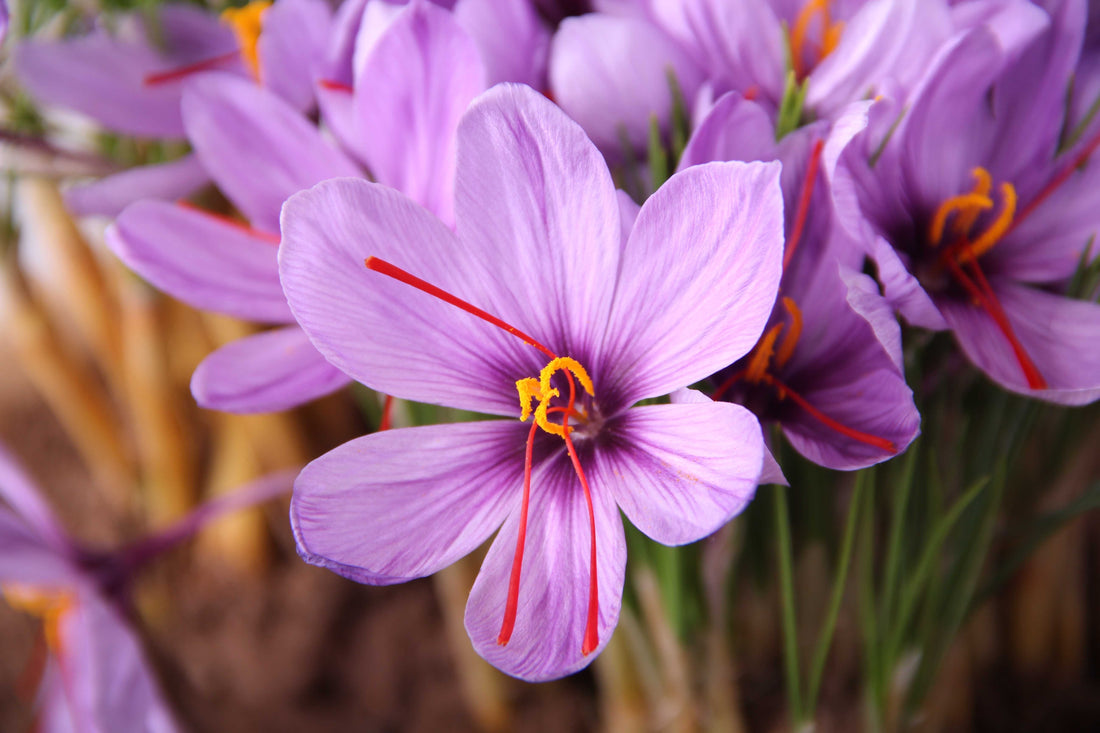
The compounds that give saffron its power
Share
When people ask us what makes saffron so valuable, we usually start with a smile—and one word: compounds.
At Roco Saffron, you don't just buy Crocus sativus bulbs. You buy saffron bulbs that have been selected and cultivated to produce saffron rich in the three natural compounds that define its quality:
- Crocin – for deep, golden color
- Safranal – for unmistakable aroma
- Picrocrocin – for complex, bittersweet flavor
These are the real markers of high-grade saffron. If you’re investing in a saffron farm or expanding your crop, these are the compounds you want to maximize—and that’s exactly what our bulbs are grown to do.
Crocin: the gold standard of saffron color
Crocin is what gives saffron its iconic yellow-gold hue when steeped in water or added to food. More crocin means:
- Brighter, richer color in your saffron threads;
- Stronger visual appeal in dishes (especially in rice, sauces, and broths);
- Higher value in the global spice market.
At Roco Saffron, our bulbs are carefully selected from parent corms that consistently yield high-crocin content. This doesn’t just come from genetics—it’s a result of quality soil, clean planting practices, and careful post-harvest drying.
Safranal: the aroma everyone recognizes
Open a jar of real saffron, and you’ll know right away. That warm, honeyed, earthy scent? That’s safranal—the volatile compound formed during the drying of the saffron stigmas.
Safranal is developed, not just grown. So in addition to strong genetics, proper harvesting timing and drying technique are key. We’ve refined our methods to preserve maximum safranal, giving our saffron its signature fragrance.
This also makes your end product more desirable to chefs, retailers, and spice traders who are looking for aroma that sells itself.
Picrocrocin: where flavor begins
Picrocrocin is the compound responsible for saffron’s bittersweet, earthy flavor. It’s what gives the spice real character, and it also plays a role in forming safranal during drying.
What matters most?
- Keeping the stigmas intact
- Drying gently and evenly
- Choosing the right moment to harvest
We grow Crocus sativus bulbs with flavor potential built in, then support that with post-harvest processes that protect picrocrocin levels.
Why this matters for you as a grower
If you're sourcing Crocus sativus bulbs for commercial planting, you're not just planting flowers—you're planting the foundation of crocin, safranal, and picrocrocin.
These compounds are what buyers, testers, and end users care about most. When your saffron tests high in all three, you have a product that commands premium prices and customer loyalty.
By choosing our bulbs, you're giving yourself the best possible starting point. Our bulbs are:
- Proven performers in crocin, safranal, and picrocrocin yield;
- Clean, vigorous, and soil-free;
- Grown specifically for professional saffron production;
- Supported with expert advice from planting to harvest.
There’s science behind the beauty of saffron. And at Roco Saffron, we’re here to help you grow it right—from the ground up.
If you're planning to plant at scale—or want to upgrade the quality of your harvest—we’d love to supply you with Crocus sativus bulbs that are bred, tested, and trusted to deliver the color, aroma, and flavor the market is looking for.
Get in touch with us to learn more or request a custom quote. Let’s grow something extraordinary—together.
